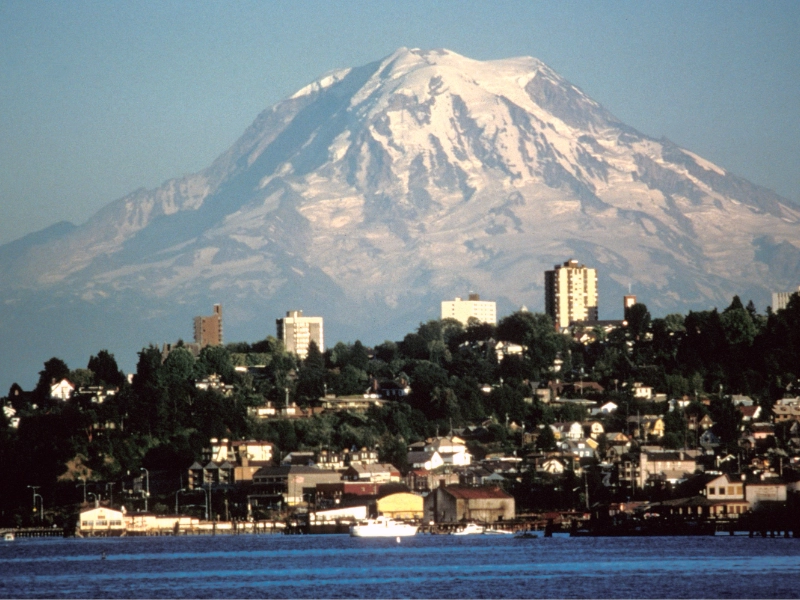Advertisement
2. Mount Rainier: The Sleeping Giant of the Pacific Northwest

Advertisement
A magnificent sentinel over the Pacific North-west terrain is Mount Rainier, a famous stratovolcano found in Washington State, USA. Rising to an amazing 14,411 feet (4,392 metres) above sea level, it dominates the skyline and reminds us continuously of the volcanic past of the area. Mount Rainier is the most glaciated mountain in the contiguous United States and the tallest peak in the Cascade Range, hence it is rather important in the surrounding ecology and climate. Its snow-capped top and large glacier system feed numerous important river systems, therefore supplying water for human populations all around as well as for animals. Mount Rainier, despite its calm look, is considered an active volcano—though it has not erupted in well over a century. Although the most recent documented eruption took place in the 1890s, scientists caution against interpreting this period of inactivity as extinction. The volcano's possible future activity mixed with its close proximity to important population hubs like Seattle and Tacoma makes it a topic of great public interest and scientific research focus. Maintaining a network of monitoring stations all around the mountain, the United States Geological Survey (USGS) continuously searches for indicators of rising seismic activity, ground deformation, or changes in gas emissions suggesting an approaching eruption. Not just the possibility of an explosive eruption but also the likelihood of lahars, destructive mudflows brought on by the fast melting glacial ice during volcanic activity, one of the main worries about Mount Rainier. These lahars seriously endanger life and property since they can reach inhabited places in the lowlands below. Extensive danger mapping and emergency planning strategies have so been created for the nearby populations. Mount Rainier is nevertheless a beloved natural monument and a common destination for nature lovers despite these possible risks. Hiking, climbing, camping, and animal viewing are just a few of the leisure pursuits the mountain and its national park present. Driven by the challenge and the promise of amazing views, many of climbers try to summit each year. Many of the plant and animal species found in the mountain's many ecosystems—from alpine meadows and barren rocky slopes near its summit to old-growth forests at its base—are unique to the area. Mount Rainier is a significant location for scientific study across many fields because of its biological variety as well as geological relevance of the mountain. Researchers are closely observing the mountain's glaciers as climate change affects the area; these glaciers have demonstrated notable loss in recent decades. These developments influence the local hydrology and ecosystem as well as offer insightful analysis of world climate trends. Mount Rainier thus serves not only as a possible threat and a leisurely paradise but also as a vital sign of Pacific North-west environmental change.
